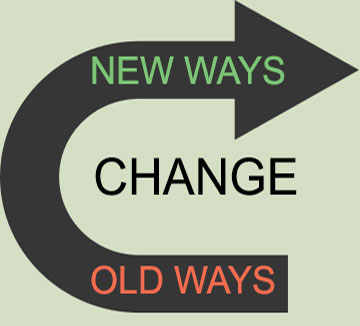 If there was ever any doubt how much people hate change, check the comment section of any blog post about the recent Apple decision regarding headphone jacks. The world has clearly come to an end for iPhone enthusiasts. How will we ever survive without a headphone jack in our iPhones? According to Apple, this life-altering design decision was an act of “courage.” It does take a lot of courage to take a stand and make a change. Of course, they did try to minimize customer outrage by including a headphone jack adapter in all iPhone 7 purchases, but according to the hordes of angry commenters, that just isn’t enough.
If there was ever any doubt how much people hate change, check the comment section of any blog post about the recent Apple decision regarding headphone jacks. The world has clearly come to an end for iPhone enthusiasts. How will we ever survive without a headphone jack in our iPhones? According to Apple, this life-altering design decision was an act of “courage.” It does take a lot of courage to take a stand and make a change. Of course, they did try to minimize customer outrage by including a headphone jack adapter in all iPhone 7 purchases, but according to the hordes of angry commenters, that just isn’t enough.
The issue isn’t that our existing stockpile of headphones will no longer work. The adapter took care of that. It isn’t that we dislike wireless things in general, and we certainly like the idea of a nearly waterproof phone. So, what is the real issue?
We just hate change.
We hate good change. We hate bad change. We hate neutral change.
We hate any kind of change that we didn’t initiate ourselves.
Two years ago, my organization switched to a new expense reporting system. I, naturally, resisted the change. I refused to go through system training until the training deadline. I even submitted my expense report in the old system the very last day it was available just to avoid the new system for a few more weeks. Coworkers told me I’d love the new features, but I wasn’t convinced. There was nothing wrong with the old system I’d used for 4 years. It wasn’t broken, so why fix it?
Then I grew to love the new system. It WAS faster. It WAS more convenient. It was amazing!
But then a funny thing happened. For a variety of reasons, this year the company decided to switch back to the old expense reporting system. You might think I’d welcome the change given the fact that I rallied so hard against leaving the old, trusted system in the first place. You’d be wrong. This time around, I complained about changing back to the old system I didn’t want to leave in the first place. Why?
I don’t like change!
Change means uncertainty, ambiguity, and a loss of control. It doesn’t feel good. We resist change because the familiar is comfortable and predictable. It is that fear of the unknown and resulting rebellion that drives a 75% failure rate for change management initiatives.
Leading a major change initiative must be handled strategically and communicated carefully. A strong leader should be understanding of the natural resistance to change while still moving the team forward toward the desired goal. Any manager can communicate a plan, but a great leader will communicate a vision. Change-averse team members can’t embrace the “what” without first understanding the “why.”
Success depends on changing more than just the way people work. It’s about changing the way they think. In some ways, the first step is changing the way we perceive change. Change management isn’t an art only understood by the C-suite. It’s a vital skill that can be developed over time through skilled coaching, action learning, and reflection at all levels of the organization. A change-ready team is one that will adapt more easily to today’s volatile and uncertain environment.
Learn more about building more effective leadership skills and navigating change with our results-oriented workshops.
